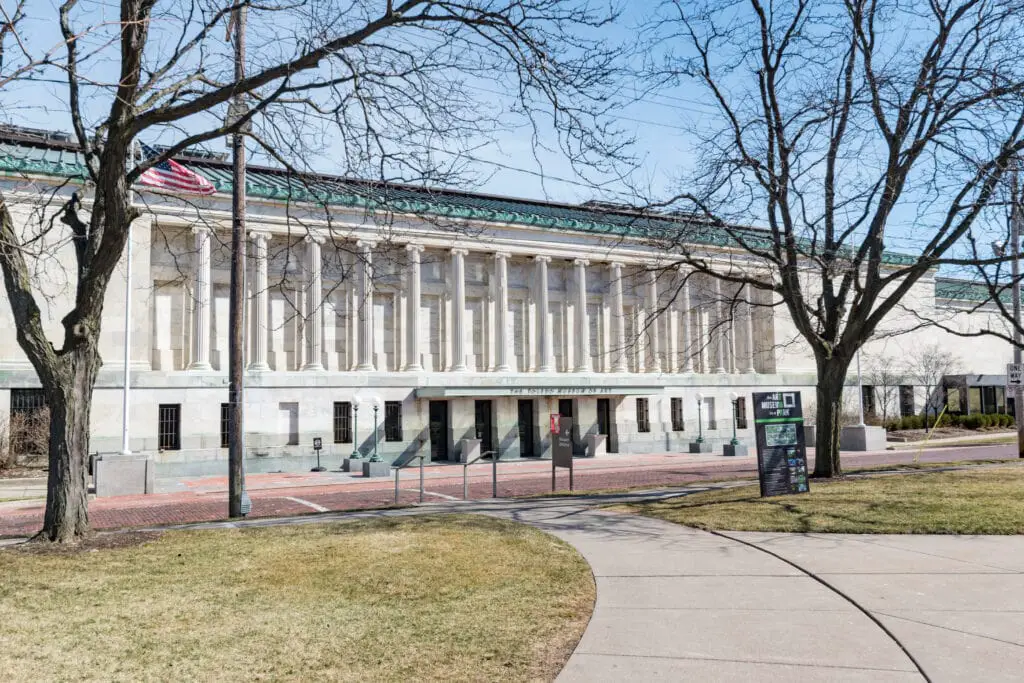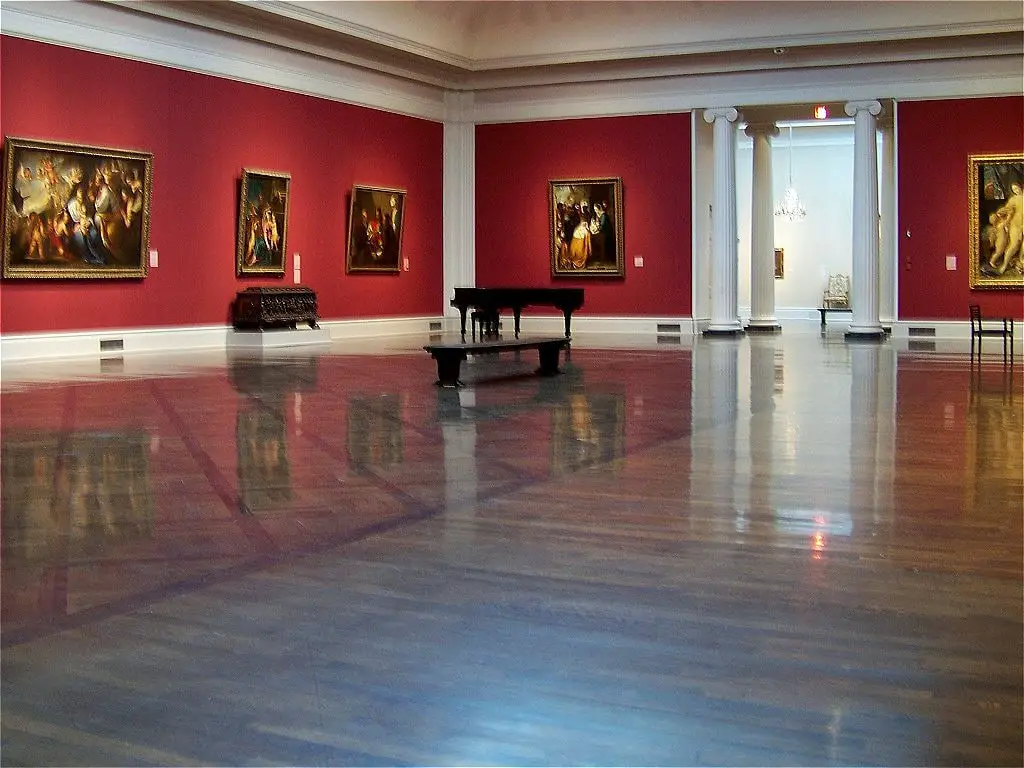Founding and Early Years
Edward Drummond Libbey, a glassmaker, founded the Toledo Museum of Art in 1901. Initially, the museum operated from a smaller facility. In 1912, it moved to its current location on Monroe Street in Toledo, Ohio.
Architects Edward B. Green and Harry W. Wachter designed the new building with a Greek revival style. The relocation and construction marked a pivotal moment in the museum’s early years.
Libbey’s influence and vision were crucial to the museum’s development. In the early 20th century, the museum laid the groundwork for its expansive and diverse collections.
The Toledo Museum of Art quickly became a cultural cornerstone in Toledo, drawing visitors and establishing itself as one of the top things to do in Toledo, Ohio.
Toledo Museum of Art: Architectural Expansion
In the 1920s and 1930s, the Toledo Museum of Art expanded its main building to accommodate growing collections and visitor numbers.
This expansion included the addition of new wings and galleries designed to blend seamlessly with the original Greek revival style.
The 1990s brought another wave of growth. The museum added the Center for the Visual Arts, designed by Frank Gehry.
This building provided additional space for studios, offices, and classrooms, enhancing the museum’s educational programs. In the 2000s, the Glass Pavilion, designed by the architectural firm SANAA, was created.
This new structure, opened in 2006, focused on the museum’s extensive glass collection and featured innovative curved glass walls.
Each expansion reflected the museum’s commitment to growth and education. These architectural developments increased the museum’s physical space and ability to serve the community and display a broader range of artworks.
Collections and Notable Works
The Toledo Museum of Art houses over 30,000 objects, making it a treasure trove of diverse art. The collection includes extensive works of glass art, reflecting the city’s heritage as a glassmaking hub.
The museum also showcases 19th- and 20th-century European and American art, with pieces by artists like Vincent van Gogh and Claude Monet.
The Renaissance collection features works by artists such as Peter Paul Rubens. Greek and Roman artifacts add to the museum’s historical depth.
Though smaller, the Japanese art collection includes beautiful pieces that highlight the elegance and skill of Japanese artists.
One of my favorite pieces is Rubens’s “The Crowning of Saint Catherine.” Van Gogh’s “Houses at Auvers” also stands out, capturing the post-Impressionist master’s vibrant use of color and emotion.
The museum continually acquires new works, ensuring every visit offers something fresh and inspiring.

The Peristyle Concert Hall
The Peristyle Concert Hall, added in 1933, is a key feature of the Toledo Museum of Art. This 1,750-seat hall serves as the main venue for the Toledo Symphony Orchestra. It is designed in a classical style and perfectly fits the museum’s Greek revival architecture.
The seating arrangement in the Peristyle mimics a Greek theater, with riser seating forming a half-circle.
Twenty-eight Ionic columns at the back of the riser seating give the hall its name. These columns create a grand yet intimate atmosphere, ideal for concerts and performances.
The Peristyle hosts the museum’s Masters series and other cultural events, making it a central hub for music lovers in Toledo. Its historical design and modern functionality make it a unique and beloved venue.
Center for the Visual Arts
The Center for the Visual Arts, designed by Frank Gehry in the 1990s, expanded the Toledo Museum of Art’s educational capabilities.
This building includes studios, offices, and classrooms for the University of Toledo’s art department. Gehry’s design, known for its distinctive style, adds a modern touch to the museum’s campus.
The Center for the Visual Arts houses the museum’s library, which provides resources for students, researchers, and visitors. Its addition highlighted the museum’s commitment to education and community engagement.
The Center’s integration into its broader complex shows how the Toledo Museum of Art balances its historical roots with contemporary needs.
This building supports various educational programs, workshops, and events, enhancing the museum’s role as an academic institution.

The Glass Pavilion
The Glass Pavilion, opened in 2006, is a major addition to the Toledo Museum of Art. Designed by the Japanese architectural firm SANAA, this building showcases the museum’s impressive glass collection. The Pavilion’s design features curved glass walls, creating an open and modern aesthetic.
The museum’s original glass collection finds a perfect home here, alongside new works, including a prominent Dale Chihuly sculpture.
The Pavilion hosts 700 public glassblowing demonstrations each year, providing a fascinating look at the artistry and skill involved in glassmaking.
The Glass Pavilion’s construction relied heavily on community support. Fundraising efforts brought in the necessary funds, making it a landmark of local investment in the arts.
This building enhances the museum’s collection and its role as a center for community engagement and education.
Recent Developments and Future Plans
The Toledo Museum of Art continues to evolve, with recent expansions and plans highlighting its growth. An Ann Arbor firm is leading the latest expansion efforts to enhance the 40-acre campus and improve visitor experiences.
The museum attracts over 380,000 visitors annually, making it a key cultural destination. Recent initiatives focus on expanding gallery space, improving educational facilities, and integrating community-oriented programs.
Looking ahead, the museum’s multiyear expansion plan promises to further its mission of making art accessible and engaging for all.
These developments ensure that the Toledo Museum of Art remains a vibrant and dynamic institution, well-prepared for the future.
